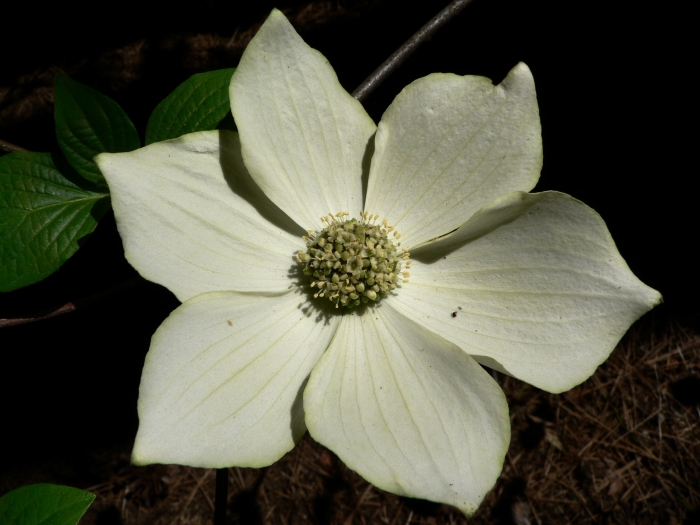Pacific Dogwood
(Cornus nuttallii)
Pacific Dogwood (Cornus nuttallii)
/
/

Walter Siegmund
CC BY 2.5
Image By:
Walter Siegmund
Recorded By:
Copyright:
CC BY 2.5
Copyright Notice:
Photo by: Walter Siegmund | License Type: CC BY 2.5 | License URL: https://creativecommons.org/licenses/by/2.5 | Uploader: Wsiegmund | Publisher: Wikimedia Commons | Title: Cornus_nuttallii_08549.JPG | Notes: Uploaded own work with UploadWizard |































































Estimated Native Range
Summary
Cornus nuttallii, commonly known as Pacific Dogwood, is a deciduous tree native to the understory of mixed coniferous/deciduous forests and forest margins in the Western United States and Canada, particularly in the Pacific Northwest. It typically grows to 6–23 meters (20–75 feet) in height with a canopy spread of up to 6 meters (20 feet). The tree’s form adapts to its light exposure: in open areas, it develops a short trunk and a wide, rounded crown, while in shaded conditions, it has a taller, tapered trunk with a more slender crown. The bark is a distinctive reddish-brown, and the tree is known for its large, showy white to pinkish bracts that surround the small, inconspicuous true flowers. These bracts give the appearance of large petals, and the flowering is most prolific in the spring, with a possible second bloom in late summer or early fall.
Pacific Dogwood is celebrated for its striking spring and fall displays, with the bracts providing a visual highlight in the landscape. It is often used in residential gardens, public parks, and as a street tree. The tree’s preference for acidic soils rich in humus aligns with its natural forest floor habitat. It requires moderate to high nutrient levels and benefits from consistent moisture, though it is not tolerant of heavy frost and thrives in USDA zone 7. While adaptable to full sun or part shade, Pacific Dogwood does best with some protection from the hottest part of the day. It is susceptible to dogwood anthracnose, a fungal disease, and powdery mildew, which can be problematic in certain climates.CC BY-SA 4.0
Pacific Dogwood is celebrated for its striking spring and fall displays, with the bracts providing a visual highlight in the landscape. It is often used in residential gardens, public parks, and as a street tree. The tree’s preference for acidic soils rich in humus aligns with its natural forest floor habitat. It requires moderate to high nutrient levels and benefits from consistent moisture, though it is not tolerant of heavy frost and thrives in USDA zone 7. While adaptable to full sun or part shade, Pacific Dogwood does best with some protection from the hottest part of the day. It is susceptible to dogwood anthracnose, a fungal disease, and powdery mildew, which can be problematic in certain climates.CC BY-SA 4.0
Plant Description
- Plant Type: Tree
- Height: 20-40 feet
- Width: 10-25 feet
- Growth Rate: Moderate
- Flower Color: Cream, White
- Flowering Season: Spring
- Leaf Retention: Deciduous
Growth Requirements
- Sun: Full Sun, Part Shade
- Water: Medium
- Drainage: Medium, Slow
Common Uses
Bee Garden, Bird Garden, Butterfly Garden, Deer Resistant, Drought Tolerant, Edible*Disclaimer: Easyscape's listed plant edibility is for informational use. Always verify the safety and proper identification of any plant before consumption., Erosion Control, Fragrant, Hummingbird Garden, Rabbit Resistant, Showy Flowers
Natural Habitat
Mixed coniferous/deciduous forests and forest margins
Other Names
Common Names: Western Dogwood, Mountain Dogwood
Scientific Names: , Cornus nuttallii, Cynoxylon nuttallii, Benthamia nuttallii, Benthamidia nuttallii,
GBIF Accepted Name: Cornus nuttallii Audubon ex Torr. & A.Gray